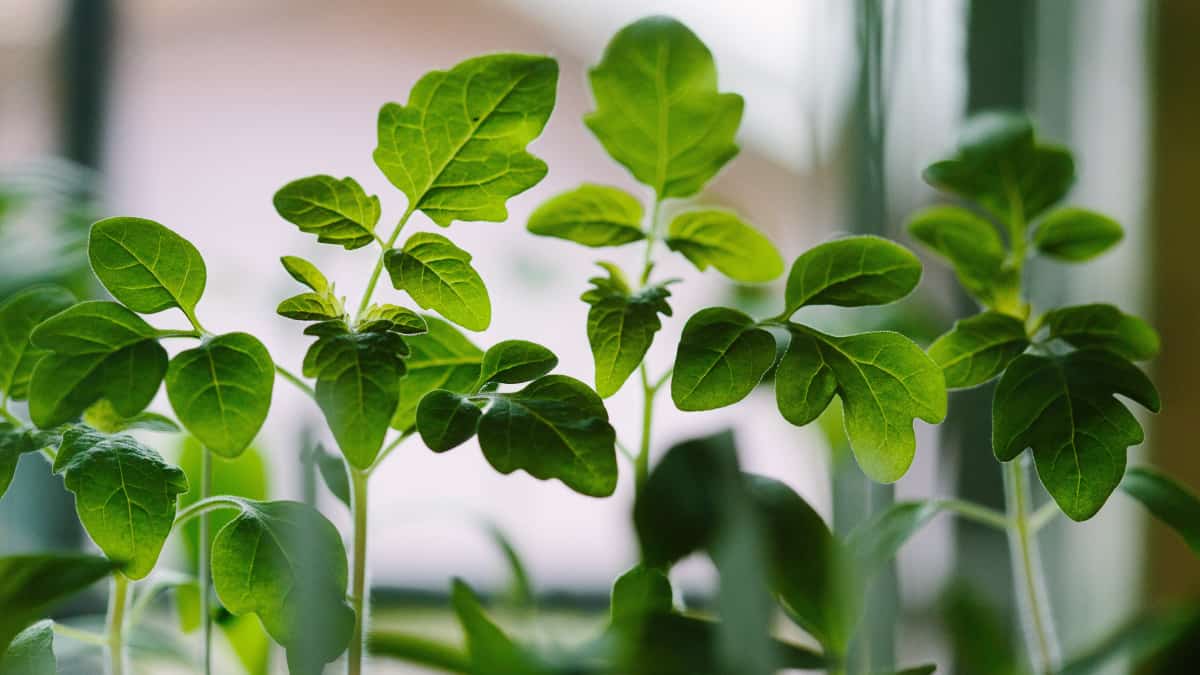If you live in a city, apartment building, or just don’t have a lot of green space to call your own, here’s how to start growing food indoors!
Starting an outdoor vegetable garden can seem daunting and is nearly impossible for many, so an indoor garden may be your solution. Here are four easy-to-grow plants you can keep right on your windowsill, with steps for each one. You can now experience just how simple growing vegetables indoors can be.
Growing Microgreens Indoors
As their name implies microgreens are popular green varieties such as kale and swiss chard, as well as radishes and beets grown on a smaller scale. Microgreens are actually the seedlings for these plants, and contain similar nutrient contents of their full-sized counterparts including vitamins A, K, and C.
How to grow microgreens indoors:
- Start by filling a seedling tray with 2 inches of soil, moisten with water until damp, and sprinkle with a variety of seeds (kale, swiss chard, dill, radishes).
- Cover seeds with a light layer of soil, and spray with water.
- Keep seeds on a sunny windowsill, and moisten soil daily to keep seeds from drying out.
- After 2-3 weeks, the plants will have grown to about 2 inches in size, and are ready for harvest.
- Cut off leaves with a pair of clean scissors, keeping the roots intact to allow for regrowth.
- Use harvested microgreens in salads, sandwiches, or as a garnish.
Microgreens make a flavorful topping on this Savory Beet and Cucumber Yogurt Parfait.
Growing Tomatoes Indoors
Garden-fresh tomatoes are bursting with flavor, as well as vitamin C, and the antioxidant lycopene. Growing your own indoors is easier than you think, and can arm you with a bounty of fresh flavor throughout the year.
How to grow tomatoes indoors:
- Start tomatoes in a six-inch pot for each plant. If you prefer to have a continuous supply of tomatoes, you can start a new tomato plant every 2-3 weeks.
- Plant seeds ¼-inch deep in starter potting soil, and keep soil moist.
- Place tomato plants in an area with ample daylight, and rotate plants often to allow for even access to sunlight on all sides.
- When seedlings grow to 3 inches tall, (about 10 days) transplant to potting soil, and water enough to keep soil moist.
- As the tomato plant grows, stakes may be needed to prevent stems from breaking.
- Harvest when tomatoes are firm and red by gently twisting from stem.
Growing food indoors can encourage you to explore new dishes! Use your windowsill tomatoes in this Cherry Tomato Ricotta Frittata.

One of the easiest and most versatile plants you can grown indoors is a fresh herb plant such as basil, dill, mint, or chives. Much like vegetables, herbs are full of vitamins and minerals, and are an easy way to add flavor to dishes without adding sodium or calories.
How to grow herbs indoors:
- Start herbs from seeds planted in a pot that is at least 6 inches wide, and filled with potting soil.
- Water plant regularly to keep soil moist, and grow in a windowsill that receives ample sunlight.
- Harvest herbs when they grow large enough to sprout leaves, while keeping roots intact.
- Add herbs to pasta, vegetables, or as a garnish to any dish.
Add your homegrown herbs to these Honey Lime Grilled Chicken and Vegetable Kebabs.
Growing Salad Greens Indoors
Nothing will encourage you more to up your salad intake than having fresh greens like romaine, spinach, and arugula at your fingertips. Leafy greens are filled with ample nutrients such as fiber, vitamin A, C, folate, and iron, as well as antioxidants.
How to grow salad greens indoors:
- Fill a planter box fitted with ample drainage holes with potting soil, and use fingers to poke holes 4 inches apart.
- Sprinkle a few seeds in each hole, cover with soil, and water regularly to keep soil moist.
- When plants start to grow, keep only the largest, healthiest shoots intact, while pulling out smaller, weaker plants.
- Once lettuce grows large enough, harvest only the outer leaves, or cut tops with clean scissors, keeping roots undisturbed to continue growth.
- Always wash harvested greens before using.
Thinking of growing arugula? Put it to use in this Pan-Seared Salmon on Arugula Salad with Tahini-Citrus Dressing.
These are just four of many different options for growing food indoors. If you aren’t sure where to start, find a fruit, vegetable, or herb that you use often in your dishes. Or, find a flavor profile you wish you could incorporate more. You’ll be surprised how much flavor indoor-grown food can add to your meals! If you’re interested in growing foods in season, take a look at USDA’s Seasonal Produce Guide.
Which of these would you grow first?





